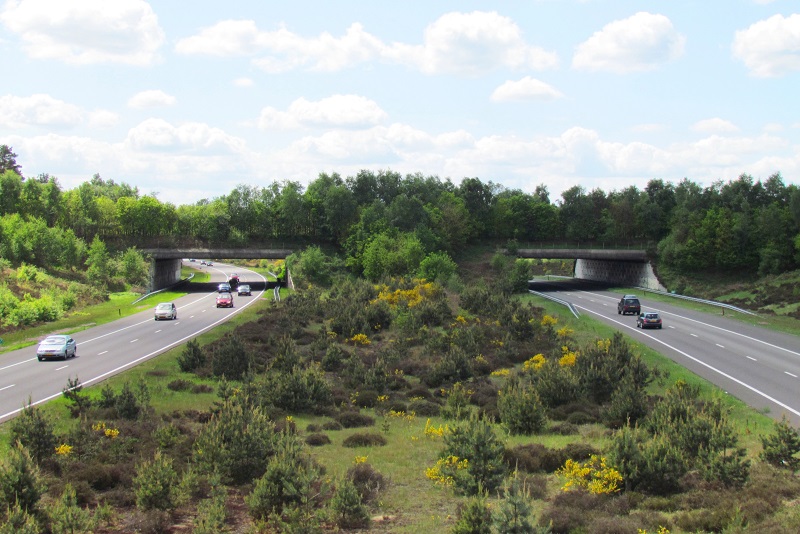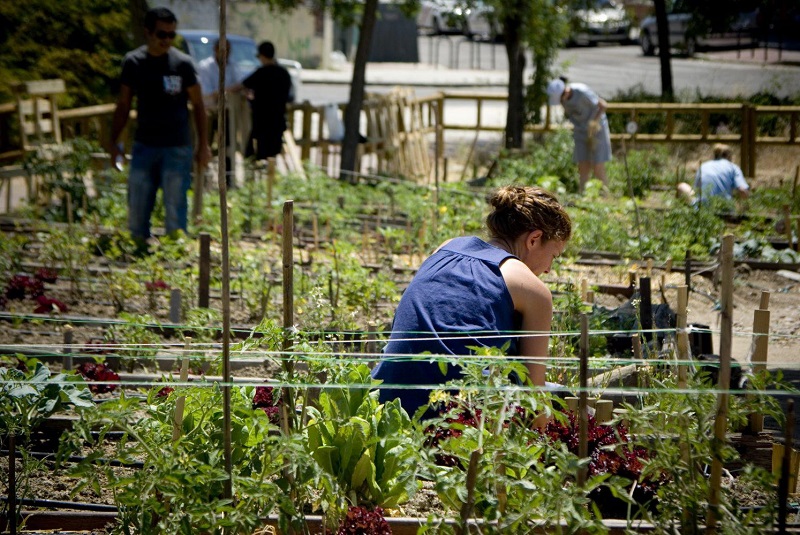16 October 2020
for Madrid Nuevo Norte

The Madrid City Council has launched an ambitious plan to increase green areas, plant hundreds of thousands of trees and interconnect natural areas with the existing network of parks. This urban strategy entitled Madrid Isla de Color (Madrid Island of Colour) builds on various initiatives. Although its most iconic space will be the future Metropolitan Forest, a 600-hectare green corridor encircling the city, the plan also includes smaller interventions in vacant lots or neighbouring communities to re-naturalise several urban spaces. The Arco Verde project, a regional ring of forests connecting different municipalities around the capital, will complement these municipal initiatives.
This post reviews the main initiatives focused on populating Madrid with green areas in the coming years, from the most extensive, at the regional level, to small local interventions.

A drawing of the two green rings; the “Arco Verde” and the Metropolitan Forest. The illustration also shows Madrid Nuevo Norte and its network of parks stretching towards the Monte de El Pardo.
In 2019, the Government of Madrid unveiled its project to create a large, ring-shaped green corridor in the region. Known as the Arco Verde, this green belt will surround the municipality of Madrid, connecting Sierra de Guadarrama National Park with three regional parks (Sureste, Hurso Medio del Río Guadarrama, and Cuenca Alta del Manzanares) and several others on the outskirts of the capital. The actions planned will connect 30 existing public green areas in 26 regional municipalities. It also includes specific measures to promote biodiversity, in particular in wetlands and waterways.

The Valdebebas Felipe VI Forest Park is one of the green spaces that will be part of the so-called Metropolitan Forest.
The Metropolitan Forest within Madrid will comprise a 75-kilometre ring of natural spaces, home to 100,000 native trees, including holm oaks, poplars, wild olive trees, strawberry trees, pines, carob trees, willows, ash trees, elms, and shrubs species such as broom, hawthorn, oleander, rosemary, juniper and rockrose. The project will connect existing forest parks to form a single ring, contributing to the ecological restoration of degraded areas. The project envisages the use of “ecoducts” or “green bridges”, wide overpasses over existing roads, to connect habitats on both sides of the infrastructures and ensure continuity between the natural spaces.

“Harm van de Veen” ecoduct on a Dutch road that ensures wildlife continuity. The metropolitan forest will have a similar ecological infrastructure to connect parks separated by motorways.
The competition for the best environmental and landscape solutions for each of the five project areas is currently underway.
The Metropolitan Forest, near the foothills of Monte de El Pardo, will connect with Madrid Nuevo Norte’s green axis, a linear network of interconnected parks that will be built in the north of the city. It will, in turn, link with the main parks in the Fuencarral-El Pardo, Tetuán and Chamartín districts. The 13-hectare Central Park over Chamartín Station’s rail yard, as well as other ecological connectivity structures over the train tracks, will complement this initiative.
The Madrid Isla de Color initiative also comprises other actions, including developing municipal plots to create more green areas in the districts and promoting urban kitchen gardens to provide food to the residents of the surrounding areas. The Barrios Productores (Productive Neighbourhoods) initiative seeks to create community kitchen gardens and transform the existing ones into genuine, productive vegetable gardens. The participating spaces will be part of an entrepreneurship program, not only to generate positive environmental impact but also boost local employment.

Madrid will promote the creation of community kitchen gardens in brownfields and spaces between blocks of flats, providing the tools needed to produce food locally. Photo: Diario de Madrid
The project will also focus on vacant urban spaces with great potential that exist in most districts in Madrid: private- or publicly-owned brownfields or plots between blocks of flats, areas with empty buildings or vacant retail space.
Parallel to this ecological restoration strategy for Madrid’s consolidated neighbourhoods, Madrid Nuevo Norte aims to incorporate nature into spaces currently occupied by the rail yard, brownfields and obsolete industries. The project seeks to create its own ecosystem to enhance local biodiversity through species adapted to the local climate and water constraints in Madrid. Madrid Nuevo Norte’s urban naturalisation project is unique in that it not only will create traditional green spaces but also build vertical gardens on facades and roofs, colonising surfaces that traditionally have not been used to grow vegetation.